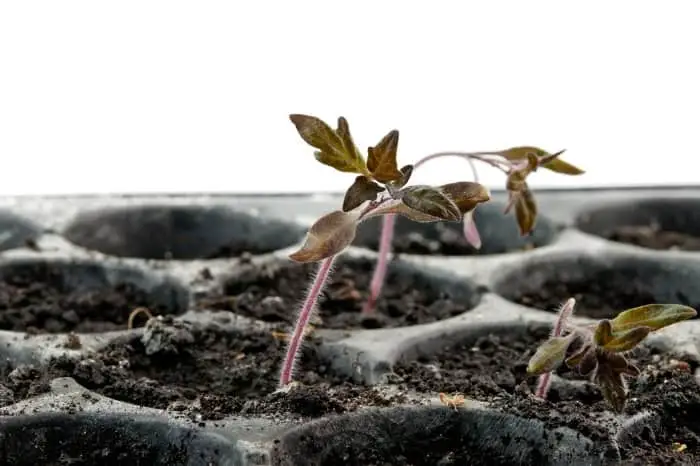

While the earliest varieties will produce just one ear per plant, later varieties will often yield two ears, especially when spacing is 12 inches or more, although you can plant as close as eight inches between plants.

You can enjoy corn throughout summer and fall by planting early, mid-season, and late varieties now. Although corn is self-fertile, in small backyard plantings less than 5% of the kernels on any corn plant result from self-pollination, while the rest are the result of pollen that comes from another plant. With fewer rows, pollination may be less than 100% and some ears will be less than full. For this reason, it is advisable to plant at least four rows of corn so that the wind, regardless of which direction it blows, will pollinate the plants. What corn plants share with fruit trees is a need for cross-pollination even if, in the case of corn, this is facilitated by the wind. It so happens that when two different corn varieties pollinate one another, the resulting kernels are starchy with a bland, insipid taste. Unlike fruit trees, however, where an orchard with more than one variety of apple, avocado, or apricot tree will result in larger harvests than if only one variety is planted, it is not a good idea to plant two different corn varieties that ripen at the same time. "As rainfall becomes more extreme, crop insurance needs to evolve to better meet planting challenges faced by farmers," said Gary Schnitkey, a professor of agricultural and consumer economics and study co-author.Now is the time to start planting corn. Because of this, the researchers feel that it is urgent for the government and farmers to design better risk management plans to deal with the predicted climate scenarios. Corn Belt region will continue to experience more intense rainfall events in the spring. Many climate change models predict that the U.S. "While drought and heat stress have been well dealt with in the existing models, excessive rainfall impacts on crop system are much less mature." "This study shows that we have a lot of work to do to improve our models," said Evan DeLucia, the director of the Institute for Sustainability, Energy and Environment, a professor of integrative biology and study co-author. Even though the ponding may take place over a small area, it could have a large effect on crop damage." "It is difficult to create a model based on the processes that occur after heavy rainfall-poor drainage due to small surface features, water table depth and various soil properties can lead to ponding of water in a crop field. "It is challenging to simulate the effects of excessive rainfall because of the vast amount of seemingly minor details," Yan said.

postdoctoral researcher and lead author of the study.Įxcessive rainfall can affect crop productivity in various ways, including direct physical damage, delayed planting and harvesting, restricted root growth, oxygen deficiency and nutrient loss, the researchers said. "Heavy rainfall can decrease corn yield more in cooler areas and the effect is exacerbated even further in areas that have poor drainage," said Yan Li, a former U. The study found that the impact of excessive rainfall varies regionally. "This was done using crop insurance indemnity data paired with rigorous statistical analysis-not modeled simulations-which let the numbers speak for themselves." Department of Agriculture insurance data for corn loss with historical weather data, letting us quantify the impact of excessive rainfall on yield loss at a continental scale," said Kaiyu Guan, a natural resources and environmental sciences professor and the study's principal investigator.

The findings are published in the journal Global Change Biology. Data suggest that drought and excessive heat caused a yield loss of up to 37% during some years. corn yield by as much as 34% relative to the expected yield. The study found that during some years, excessive rainfall reduced U.S.


 0 kommentar(er)
0 kommentar(er)
